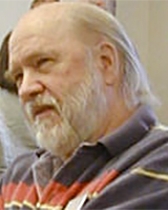John B. Ketterson
Fayerweather Professor of Physics and Astronomy

- j-ketterson@northwestern.edu
- Website
- 847-491-5468
- Tech F243
Research Interests
Research in this group can be broadly divided into three categories: i) superconducting and magnetic micro/nanostructures, ii) optical physics, and iii) cold atom physics.
The first effort involves (optical or e-beam) patterned structures initially formed from thin films. It includes superconducting tunnel/Josephson junctions and arrays of discs or holes in otherwise continuous films or multilayers of superconducting and/or magnetic materials (e.g. Nb or permalloy). The magnetic measurements are focused on the resonant modes of internally precessing spins. There is a parallel effort to simulate their expectd behavior. Part of the superconducting work focuses on multilayer junctions with possible Qubit applications. An example of an effort combining the effects of superconductivity and magnetism is the trapping of superconducting vortices by magnetic “dots”.
One component of our optical work centers on studies of long-lived - high density excitons (with the longer range goal of having them Bose condense). This principally involves the material cuprous oxide.
A more recent optical physics effort centers on trapping multiple objects using the technique of laser tweezers. By interfering several beams one can trap arrays of particles. A longer range goal is to apply these techniques to biophysical problems, e.g. biomolecule mechanics or cell assembly. We also perform optical characterization measurements including nonlinear optical responses, surface plasmons, and surface enhanced Raman spectroscopy.
Our most recent effort, currently funded under the NSF IGERT program, will be directed at trapping two-dimensional arrays of cold atoms (Rb) to study various superfluid and “solid” phases.
Selected Publications
Frazer, Laszlo, et al. (2014). "Photoionization cross section of 1s orthoexcitons in cuprous oxide." Physical Review B, 89(24), 245203.
http://arxiv.org/abs/1406.4911
Frazer, Laszlo, et al. "Third-harmonic generation in cuprous oxide: efficiency determination." Optics Letters 39.3 (2014): 618-621.
http://arxiv.org/abs/1312.7371
Frazer, Laszlo, Richard D. Schaller, and J. B. Ketterson. "Unexpectedly slow two particle decay of ultra-dense excitons in cuprous oxide." Solid State Communications 170 (2013): 34-38.
http://arxiv.org/abs/1312.7372
Chang, Kelvin B., et al. "Removal of Copper Vacancies in Cuprous Oxide Single Crystals Grown by the Floating Zone Method." Crystal Growth & Design 13.11 (2013): 4914-4922.
Sklenar, J., et al. "Broadband ferromagnetic resonance studies on an artificial square spin-ice island array." Journal of Applied Physics 113.17 (2013): 17B530.
Sklenar, J., et al. "Strongly localized magnetization modes in permalloy antidot lattices." Applied Physics Letters 102.15 (2013): 152412.
Bhat, V. S., et al. "Controlled Magnetic Reversal in Permalloy Films Patterned into Artificial Quasicrystals." Physical review letters 111.7 (2013): 077201.
Bhat, V. S., et al. "Ferromagnetic resonance study of eightfold artificial ferromagnetic quasicrystals." Journal of Applied Physics 115.17 (2014): 17C502-17C502.
Bhat, V., et al. "FMR Study of Permalloy Films Patterned Into Square Lattices of Diamond Antidots." Magnetics, IEEE Transactions on 49.3 (2013): 1029-1032.
One-dimensional long-range plasmonic-photonic structures
W. Mu, D. B. Buchholz, M. Sukharev, J. I. Jang, R. P. Chang, and J. B. Ketterson
Optics Letters, Vol. 35, Issue 4, pp. 550-552 (2010)
High-quality Cu2O crystals with various morphologies grown by thermal oxidation
S. E. Mani, J. I. Jang, J. B. Ketterson and H. Y. Park
Journal of Crystal Growth Volume 311, Issue 14, Pages 3549-3552 (2009)
Large third-order susceptibility and third-harmonic generation in centrosymmetric Cu2O crystal
S. E. Mani, J. I. Jang, and J. B. Ketterson
Optics Letters, Vol. 34, Issue 18, pp. 2817-2819 (2009)
